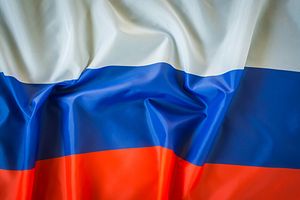In Daniel Rosenblum’s testimony to a House subcommittee last week explaining the U.S. State Department’s FY 2017 budget requests for Central Asia (which my colleague Ankit Panda pointed out amount to about 1.3 F-35s), he took time to focus on “Russia’s destabilizing actions on its periphery.”
While the overall picture of State Department funding for Central Asia is one of increase (this is of course, being a budget request which may not translate to the actual budget), as Joshua Kucera argued on EurasiaNet, there seems to be a policy swing “back in favor of a securitized approach.”
One interpretation, Kucera wrote, was “a purely rhetorical shift”:
The State Department recognizes that most members of Congress are not — to be generous — experts on Central Asia. And it’s just good politics to frame the policies, whatever they are, in terms of things they can understand, like Russia and ISIS. In the absence of more details about the proposed aid programs, it’s hard to tell how much of a real shift there is.
There are no details in the testimony regarding specific programs. One of the only morsels goving a clue on program areas was Rosenblum’s highlighting of the threat Russia posed to its neighbors and the importance of supporting regional media to counteract Russian propaganda.
“Russia’s well-financed propaganda machine,” Rosenblum said, “has made deep inroads into public opinion among the populations of Central Asia.” He continued:
It is important that Central Asian media and the people they serve have access to multiple sources of objective information, and are not solely relying on one, often extremely one-sided and distorted perspective. In this budget request, we are therefore seeking continued funding to cooperate with media outlets in Central Asia to professionalize and improve the production and distribution of news and entertainment content. We are also requesting increased funding to promote the consumption of alternative media sources that provide more accurate reporting of regional and global developments.
Rosenblum wasn’t alone in mentioning Russia’s Eurasian media influence. Marie Yasishock, deputy assistant USAID administrator for Asia, said the “FY 2017 request furthers USAID’s mission to end extreme poverty and promote resilient, democratic societies while also countering Russian pressure in Central Asia through economic development and strengthened news media.”
Alina L. Romanowski, State’s coordinator of U.S. assistance to Europe, Eurasia, and Central Asia said, “Our assistance throughout the region will support increased access to objective information and the development of independent media.”
Russian media–particularly state-sponsored outlets–have long been criticized for a lack of objectivity and distortion of facts. (I’ve personally been very critical of Sputnik, for example). A perfect case of the distortion chamber that exists in some Russian media is the recent fracas between the journalist behind a documentary on Russian sports doping, Hajo Seppelt, and a Russian state TV crew. To put it shortly: the Russian media machine is branding the incident as an attack on a female reporter while more circumspect observers note the inconsistencies in the Russian state narrative. In Central Asia, many Russian outlets are accessible and popular, and a number of regional outlets are backed by Russian partners, such as Kazakhstan’s First Channel Eurasia, which tried very hard to link the Land Code protests to American money.
But Central Asia’s media problems are not entirely the fault of slanted Russian reporting. The governments of Central Asia are, by and large, uncomfortable with what those in West would call a “free press.” Additionally, the region is saturated with rumors and conspiracy theories that fit very well into how Central Asians understand relatively recent history (case in point: U.S. covert support of the mujahideen battling Soviet occupation in the 1980s was real). Efforts to professionalize the journalists of Central Asia and improve distribution of news and entertainment programs may be well-meant by Washington, and sorely needed in the region, but such efforts are also likely to be misinterpreted by Central Asian leaders. Outlets like Radio Free Europe/Radio Liberty–which has an array of local-language bureaus–are funded by the U.S. government and turn out excellent regional reporting. But RFE/RL has difficulty operating in some Central Asian states where their websites are banned, broadcasts blocked, and local correspondents put under considerable government pressure.
What specifically Rosenblum meant by “alternative media sources” is unclear, but the details matter less than how that phrase will be interpreted from Central Asia’s capitals all the way to Moscow.

































